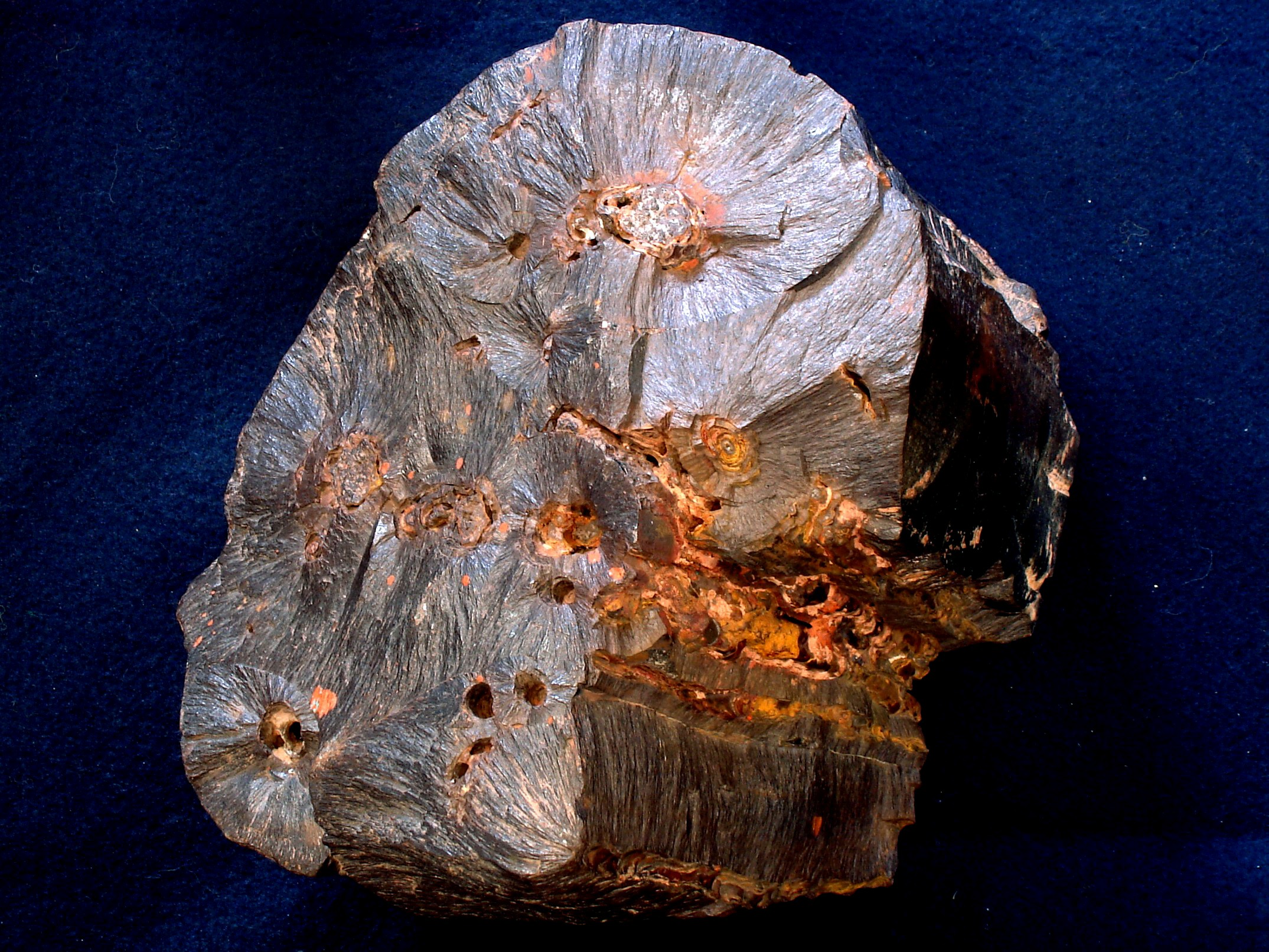- Goethite
Infobox mineral
name = Goethite
category =
boxwidth =
boxbgcolor =

imagesize =
caption = Goethite,from Minas Gerais,Brazil
formula = α-IronOxygen(Hydroxide)
molweight =
color = Yellowish to reddish to dark brown
habit =
system =Orthorhombic 2/m2/m2/m
twinning =
cleavage = Perfect 010
fracture = uneven to splintery
mohs = 5 - 5.5
luster = adamantine to dull
refractive = Opaque to sub-translucent
opticalprop =
birefringence =
pleochroism =
streak = brown, brownish yellow to orange yellow
gravity = 3.3 - 4.3
density =
melt =
fusibility = Fusible at 5 - 5.5
radioactivity = None
diagnostic =
solubility =
diaphaneity =
other = Becomes magnetic in reducing flame
references = [Hurlbut, Cornelius S.; Klein, Cornelis, 1985, Manual of Mineralogy, 20th ed., Wiley, ISBN 0-471-80580-7] [http://webmineral.com/data/Goethite.shtml Webmineral data] [http://www.mindat.org/min-1719.html Mindat data with locations] [http://www.galleries.com/minerals/oxides/goethite/goethite.htm Mineral galleries]Goethite, named after the German
polymath Johann Wolfgang von Goethe , is an iron bearing oxide mineral found in soil and other low temperature environments. Goethite has been well known since prehistoric times for its use as apigment . Evidence has been found of its use in paint pigment samples taken from the caves of Lascaux inFrance . It was first described in 1806 for occurrences in the Mesabi iron ore district ofMinnesota .Recently, nanoparticulateauthigenic goethite was shown to be the most common diagenetic iron oxyhydroxide in both marine and lake sediments. [ C. van der Zee, D. Roberts, D.G. Rancourt, C.P. Slomp. Nanogoethite is the dominant reactive oxyhydroxide phase in lake and marine sediments. "Geology" 31 (2003) 993-996.]Composition
It is an iron oxyhydroxide. Goethite's hardness ranges from 5.0 to 5.5 on the Mohs Scale, and its
specific gravity varies from 3.3 to 4.3. The mineral forms prismatic needle-likecrystal s, but is more typically massive.Feroxyhyte andLepidocrocite are both polymorphs of the iron oxyhydroxide FeO(OH). Although they have the same chemical formula as goethite they each have different crystalline structures making them distinct minerals.Usage
Its main modern use is as an
iron ore , being referred to as "brown iron ore". It does have some use as aclay earth pigment . Iron rich lateritic soils developed overserpentinite rocks in tropical climates are mined for their iron content as well as other metals.Formation
Goethite often forms through the
weathering of other iron-rich minerals, and thus is a common component ofsoil s. It may also be precipitated bygroundwater or in other sedimentary conditions, or form as a primary mineral inhydrothermal deposits.Prevalence
Goethite is found all over the planet, usually in the form of
concretion s, stalactitic formations,oolite s (a form consisting of tiny round grains cemented together), reniform (kidney shapes) or botryoidal (globular, like bunches of grapes) accumulations. It is frequently encountered in the swampy areas at the head of spring waters ('bog iron '), on cave floors, and on the bottom of lakes and small creeks. The "boxworks" orgossan resulting from theoxidation of sulfide ore deposites is formed of goethite along with other iron oxides and quartz.Significant deposits of goethite are found in
England ,Australia ,Cuba , andMichigan ,Minnesota ,Missouri ,Colorado ,Alabama , Georgia,Virginia , andTennessee in theUnited States .Deposits significant in location, if not in abundance, have been found in Gusev by NASA's Spirit rover, providing strong evidence for the presence of liquid water on the planet Mars in an earlier stage of its development.
References
ee also
*
Ochre
*List of minerals
Wikimedia Foundation. 2010.
